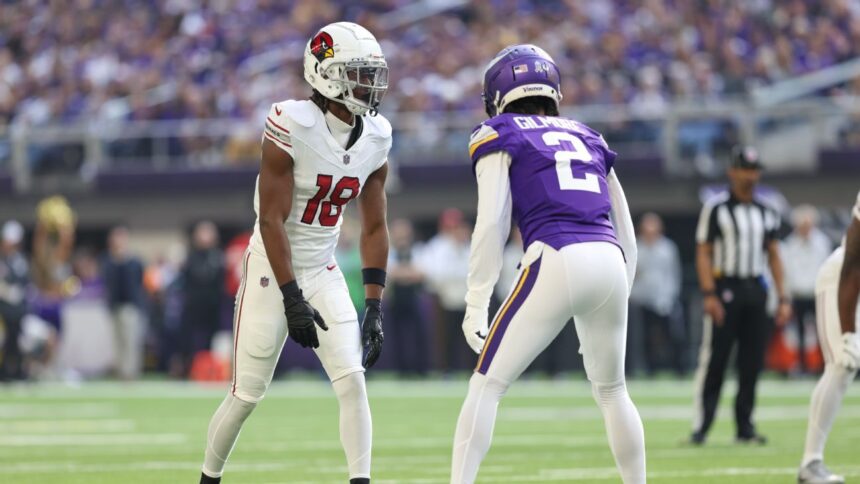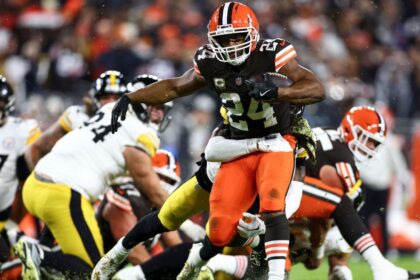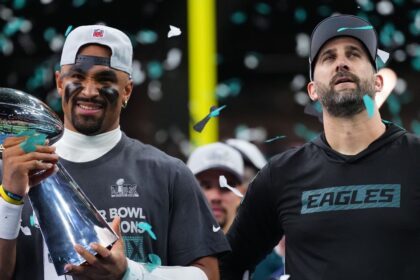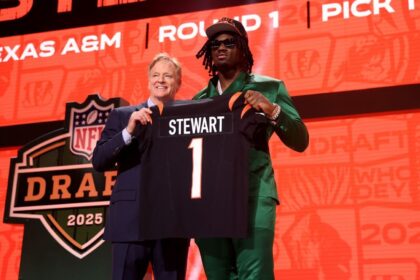Deep Dive: Who Are the Second-Year Receivers to Watch?
With NFL rookie minicamps underway, attention seems to be focused on the 2025 draft class. However, after witnessing the impressive receptions of Tetairoa McMillan and the runs of Ashton Jeanty in recent months, it’s time to turn our attention back to the 2024 class and thoroughly analyze its receivers.
For many NFL and draft fans, prospects often take a backseat once they are selected. Everyone has an opinion on Rome Odunze until he is picked by a team they don’t watch every Sunday, and those opinions fade. It’s time to dive back into the 2024 class, focusing on the receivers. Nine were selected in the first 37 picks of 2024. The impression is clear: it’s an exceptional group.
To analyze this class, we will pose and answer a key question for 13 second-year receivers, based on their performance and usage during their rookie season. Some standout performances warrant important questions, while discreet debuts lead us to more specific reflections.
Key Questions for Second Year Students
- Is Ladd McConkey a WR1?
- Is Brian Thomas Jr. the next great receiver?
- What happened with Marvin Harrison Jr. last season?
- What will a normal season look like for Malik Nabers?
- Where was Rome Odunze last season?
- Was the Super Bowl a harbinger for Xavier Worthy?
Is Ladd McConkey a WR1?
The question of what defines a “WR1” is complex. Is it productivity? The role within the team? Or simply the general perception? McConkey, selected in the second round by the Chargers, seems to meet the requirements.
With 1,149 yards and seven touchdowns in 2024, McConkey proved to be a difficult receiver to cover. His route-running ability is exceptional, making him almost impossible to defend in single coverage. Furthermore, he possesses impressive speed, allowing him to turn short passes into big gains. He had 15 receptions of over 20 yards, ranking among the best rookies.
The Chargers maximized their route-running ability by placing him in the slot on most plays (70.5% of his routes and 66.7% of his targets). This is significant, as WR1s don’t usually play in the slot that much. His ability to separate from defenders is what really stands out.
A key example is his play in Week 4 against Kansas City. McConkey, from the slot, fakes out the cornerback and creates space for a 37-yard reception. The lack of depth in the Chargers’ receiver roster also contributed to his position in the slot.
With 2.57 yards per route run, McConkey ranked at the top of the league. If we consider only routes as the most open receiver, his average rises to 2.64. Despite his size, his ability to win in the slot and his ability to separate make him stand out.
Although he had some drops and fumbles, McConkey has the potential to be a dominant receiver. His ability to generate problems for the defense, even if he is not the traditional WR1, makes him a key player.
Is Brian Thomas Jr. the next great receiver?
Brian Thomas Jr., selected in the first round by Jacksonville in 2024, had an outstanding season, with 1,282 yards and 10 touchdowns. His speed is impressive, reaching 22.15 mph on an 85-yard touchdown. Furthermore, his ability to track the ball and fight for it is exceptional.
In a game against the Patriots, Thomas gave Christian Gonzalez, one of the best cornerbacks, a hard time. His ability to adjust his body and catch the ball at full speed and in physical contact is remarkable.
Thomas is not only fast, but also masters the routes. His ability to gain space vertically and deceive defenders is evident. Thomas’s potential is enormous, and his rookie season is reminiscent of A.J. Brown’s.
Despite the changes in the Jaguars’ coaching staff, Thomas had a significant target share (25.3%). If the 2024 draft were to be re-drafted, Thomas would be a sure pick as the first receiver. His technical skills, speed, and size position him to be an elite receiver in the coming years.
What happened to Marvin Harrison Jr. last season?
Marvin Harrison Jr., selected in the fourth position, led the league in targets in close coverage situations. This may be due to several reasons. First, quarterback Kyler Murray tended to look for Harrison, even in difficult situations. This was reflected in the team’s strategy, which often sought Harrison in one-on-one situations.
An example is a play against the Bears, where Murray chose to throw to Harrison on a deep pass instead of looking for other more open options. This decision, although understandable, resulted in tight coverage and a pass breakup.
Another reason is that Harrison was not used creatively. He was often asked to run straight-line routes, which made it easier for defenders to predict. Compared to other receivers, Harrison did not participate as much in motions or alignment changes, which limited his opportunities.
This situation is similar to that of other receivers who receive a lot of attention in tight coverage situations. However, Harrison was not used to exploit his athletic abilities. Despite his 885 yards and eight touchdowns, his potential was not fully realized.
In summary, the lack of creativity and the inability to maximize his skills limited Harrison’s impact in his rookie season. With a better game plan, he could become an elite receiver.
What will a normal season look like for Malik Nabers?
Malik Nabers was targeted on 30.8% of the Giants’ passes, a very high percentage, especially for a rookie. He was the rookie receiver with the highest target percentage since the year 2000.
Additionally, he was targeted on 39.9% of pass attempts against single coverage, a figure only surpassed by Davante Adams and Tyreek Hill in the last ten years. Nabers carried a heavy responsibility in a deficient offense, resulting in high productivity but moderate efficiency. His yards per target average was 7.0, below expectations.
Nabers’ profile resembles that of a slot receiver, with a high target volume and a great separation ability. However, he played more on the outside and received longer passes.
Nabers’ talent is evident, with excellent body control and awareness of the sideline. He made spectacular catches in difficult situations and demonstrated speed and ability to win on long routes. He finished with 109 receptions, 1,204 yards, and seven touchdowns.
Ideally, Nabers wouldn’t have to handle more than 30% of the targets to improve his effectiveness and reduce physical contact. If the Giants manage to open up more opportunities in the slot, it could increase his impact on the game.
Where was Rome Odunze last season?
Rome Odunze, the ninth overall pick, often received incomplete passes. According to ESPN data, Odunze received 37 poorly thrown passes, the most in the league. This was largely due to a lack of connection with quarterback Caleb Williams.
Odunze was the receiver who made the most errors due to lack of communication with Williams. He was also the target on the longest passes. Despite being the team’s best deep threat receiver, his errors in communication and lack of chemistry with Williams affected his performance.
With the arrival of the new coaching staff and the possible emergence of Luther Burden III, it is expected that Odunze can focus on intermediate routes and receptions in situations of physical contact.
The analysis of the coaches will be key to evaluating Odunze’s development. If he manages to adapt to a more stable environment, he could improve his performance and surpass the 734 yards and three touchdowns of 2024.
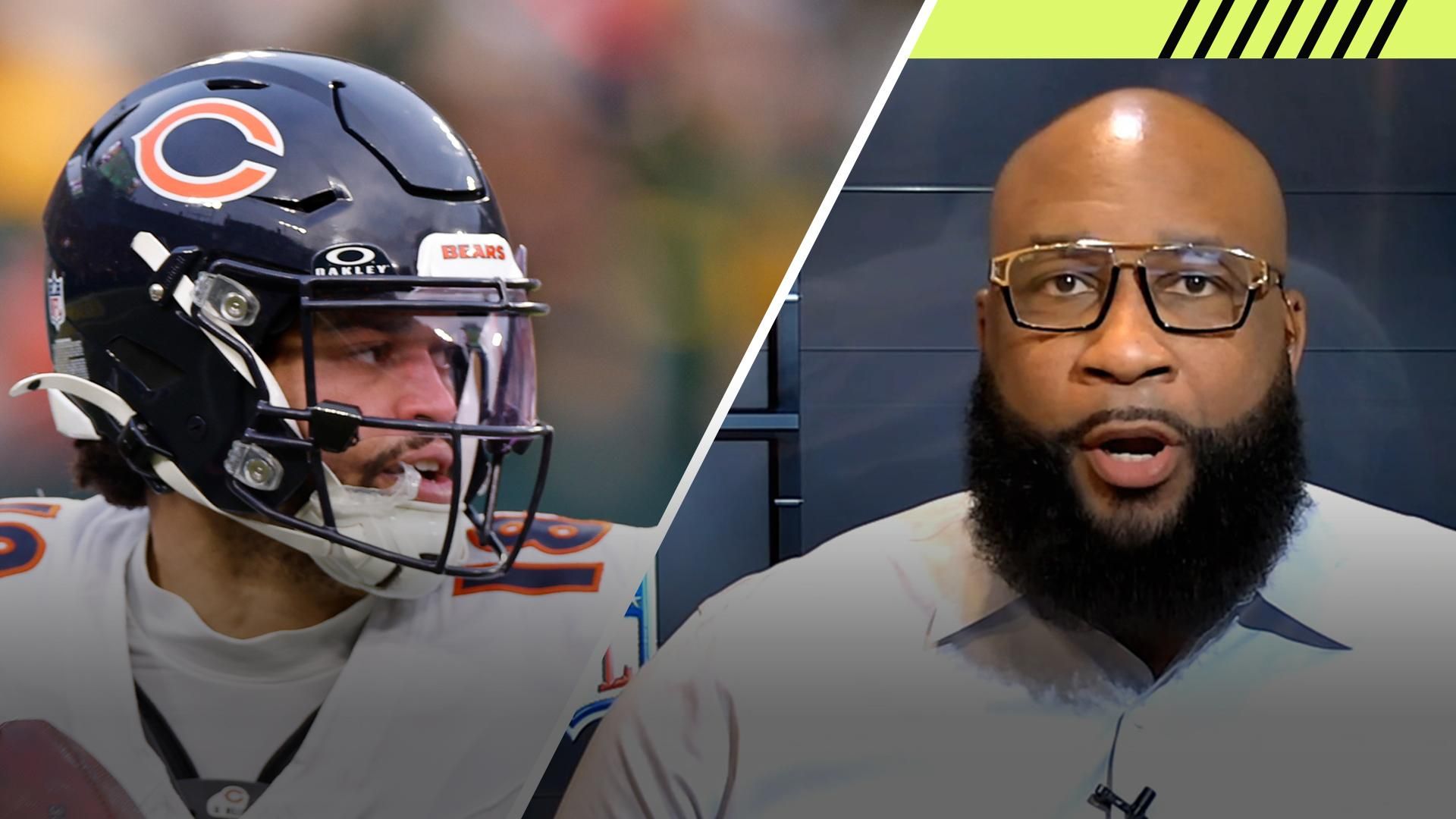
Legend: 2:00 Why Marcus Spears likes the Bears’ rebuild. Marcus Spears and Jason McCourty praise the Bears’ offseason and state it’s time for Caleb Williams to step up.
Was the Super Bowl a Harbinger for Xavier Worthy?
In the first half of the 2024 season, the Chiefs tried to use Worthy as a deep receiver, but it didn’t work. He averaged 11.9 air yards per target and only completed 51.9% of his passes. His ability to catch the ball in the air and in situations of physical contact was limited.
As the Chiefs’ ground game lost effectiveness, they began to use Worthy on short plays and lateral runs to generate explosive plays and move the chains. The depth of his targets decreased, and his reception percentage increased. In the Super Bowl, Worthy’s role was clear: screens, sweeps, reverses, and short crosses.

